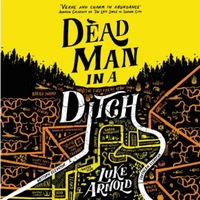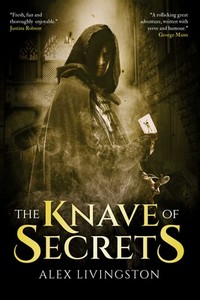 The Knave of Secrets
The Knave of Secrets
DETAILS: Publisher: Solaris (US), Rebellion Publishing (UK) Publication Date: June 7, 2022 (US), June 9, 2022 (UK) Format: eARC Length: 400 pg. Read Date: April 28- May 2, 2022

What’s The Knave of Secrets About?
Valen Quinol has pretty modest ambitions—he’s not looking to become rich or famous or anything, he’s seeking stability and comfort. He wants to open a casino with his wife, he just needs to get the money to do that. Earlier in his life, he went to wizarding school and left in a pretty noteworthy fashion, when it was clear that his scholarly ambitions were going to be thwarted. So he turned to the only thing he knew he could support himself with—gambling. And sure, in addition to being a pretty savvy gamesman, he became pretty skillful in ways to rig games.
Valen’s wife, a friend who left school with him—Teneriève—and another friend work with him now—traveling around from casino to casino, from tavern to inn, etc. making enough money to support themselves, and maybe put a little away.
After the reader meets the crew, a local ganglord pays Valen and Margo a visit to hire/threaten them into doing a job for him. Valen typically shuns his work, but this one comes with some tantalizing bait—Valen will be given the buy-in for a local tournament and can keep the money he earns. All he has to do is make sure one competitor walks losing everything they came to play with. If he turns this down, well, there’ll be a duel in his future. And Valen’s a cardsharp, not a fighter. It will not go well for him.
Because this isn’t that kind of Fantasy novel, Valen and his talents go with the less violent option. What Valen doesn’t realize—and his sponsor doesn’t either—what the defeat of his target is going to kick off and drag them all into.
Espionage, murder, political intrigue, societal upheaval—and the imminent possibility of a world war. All because of a game of chance.
We get to watch Valen and his crew (partially) realize what they’ve instigated, as well as getting points of view of several of the major players in the fallout.
Teneriève
Teneriève is one of the more interesting characters in the novel—she’s from a group that’s essentially an analogue to the Roma, and faces hostility and discrimination everywhere she goes. Valen’s crew are the only family she’s known since leaving home, but even then, she doesn’t feel secure—not because of anything they do/think, but because of her own issues.
Her story arc doesn’t go the way you think it will initially, and I’m glad it didn’t. Her story definitely doesn’t get wrapped up in a tidy bow. She could probably serve as the central character in a follow-up novel because there’s a lot to her that could be explored. I also really appreciated while the Roma-esque nature of her background informs her actions and attitudes, her story isn’t all about that identity.
Quick tip: As good as the other storylines are, pay special attention to her scenes, they’re better (and frequently more frustrating and rewarding) than the rest.
Something that Just Occurred to Me
Before I hit Publish, I was struck by the thought that this is one of the most PG-13 Fantasy novels I’ve read in a dog’s age that wasn’t targeted at an MG audience. Maybe even PG (but a couple of the deaths probably shove it into the PG-13 world).
I don’t know that this is a plus or a minus in some readers’ minds, but I thought it was noteworthy—who writes like that anymore?
So, what did I think about The Knave of Secrets?
I’ll tell you this upfront: I was not in the right frame of mind for this book when I started it. A novel with a new magic system, an involved history, a complicated (but not convoluted) political situation, and gambling—and people cheating at gambling. So you’ve got to understand the new games pretty well to visualize not just how to play, but how to cheat. Frankly, that’s a lot of work.
Now, that’s not unusual for a Fantasy novel—and I’m not complaining. I’m just saying that when I started this book I didn’t have the mental energy to dive in, and I really wasn’t in the mood for it. So when I say that before the halfway point Livingston had me very engaged and invested in the plot and characters, that’s saying something.
Livingston has done his homework and has created a very rich world here, we get to see some of it, but probably not all of it. Whether or not this is true, he really gives the sense that he knows all of the ins and outs of the history of these nations going back centuries—and (most importantly) has resisted the impulse to dump it all on the reader. Instead, he gives us just what we need to ground the story and character actions. Give me a book that hints at worldbuilding any day over a book that reads like a history textbook (however interesting the history may be).
All the marketing for this mentions The Lies of Locke Lamora, and insofar as the book centers on a specialized form of criminals fleecing the rich, sure, I can get behind it. But this has a very different flavor and feel than Lynch’s novel. Some marketing mentions The Mask of Mirrors—and that feels a bit more on point. Other comparisons involve Casino Royale—beyond the gambling, I don’t know if that’s appropriate or not, I fell asleep each of the four times I started that flick. The political intrigue of this makes it more like The Mask of Mirrors or the less bloody and sexy parts of A Song of Ice and Fire. I don’t point this out (just) to criticize the marketing materials, just to help expectations—don’t go into this novel to meet the next Gentleman Bastards, go into it for a new and distinct kind of Fantasy novel.
Despite not being in the right headspace for The Knave of Secrets and going into it with wrong expectations, I ended up pretty impressed with this novel and would definitely recommend this to a wide audience. It’s a satisfying read that will leave you wanting to know more about this world and most of these characters.
This post contains an affiliate link. If you purchase from it, I will get a small commission at no additional cost to you. As always, opinions are my own.
My thanks to The Write Reads for the invitation to participate in this tour and the materials (including the novel via NetGalley and Rebellion/Solaris) they provided.



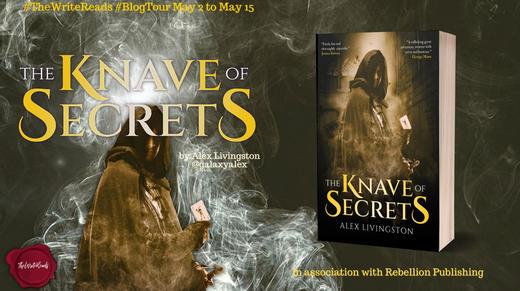

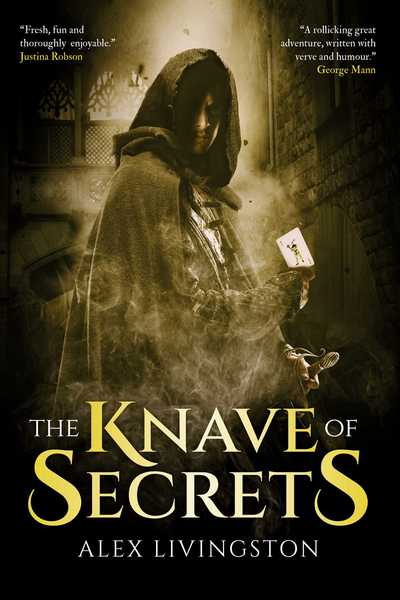

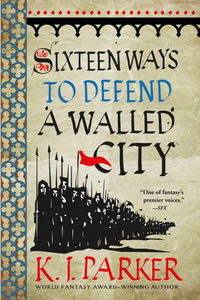


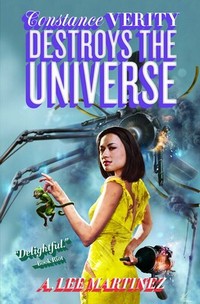

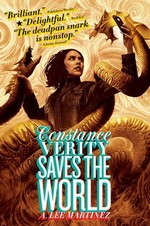


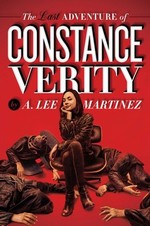
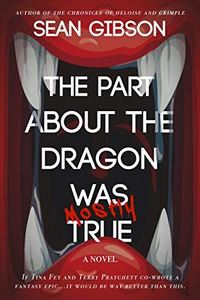

 Grab a book, any book.
Grab a book, any book.